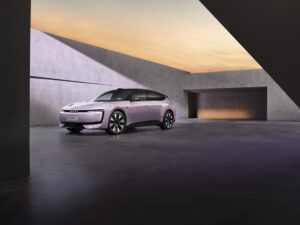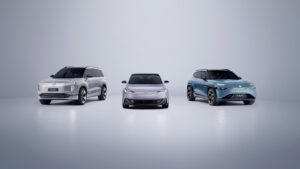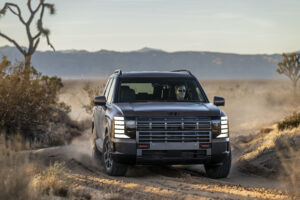Integrating the Wacom Inkling into the Creative Automotive Design Process
[singlepic id=12027 w=640 h=480 float=center]
Text, photos, video, design and animation by Cor Steenstra
Wacom introduced the Inkling in 2011, and I was drooling at the idea of it. I couldn’t wait to get my hands on one, and was glad Wacom was interested to supply me with a unit. I was so thoroughly impressed with it, that I wanted to show how I integrate this in my Automotive Design process.
httpvh://www.youtube.com/watch?v=iXjfsttP3CM
As you can see in the accompanying video, I start out sketching when and where the inspiration strikes, in this case at my local pool and in the sunshine, under an umbrella of course. The main advantage of the Inkling is that it is so handy, pocket sized, that you can take it with you anywhere. It is less clunky than an iPad (don’t get me wrong, i LOVE my iPad), and I prefer sketching with a ballpoint pen still, even though I pioneered sketching on a tablet within my car design process. The old napkin sketch literally happens way too often, and the Inkling offers the opportunity to capture this in high definition, digitally, and with layer options.
That is the other really cool thing. Often I start out with some rough sketch lines, to set the proportions and to get an overall feel. I then get a bit more into what I want where, and then go in to detail. With the inkling I can capture all these phases on separate layers, easily and conveniently. That way I don’t loose any of the old, base, core inspiration lines and their dynamics, but it does allow me to selectively use the cleaner, more detailed layers if I want to take it to a rendering stage. I can even do variations on the same piece of paper, using separate layers, and make a mess of the actual paper sketch, and still have the ability to separate everything afterwards and keep my various separate proposals/variations.
The Wacom Inkling integrates seamlessly into Photoshop, so the layers functionality can be used to its fullest, but the most astonishing thing here is the integration with Autodesk’s Sketchbook pro. In Sketchbook Pro you have paint layers and vector layers, and even though I made rough sketches, when opening the layers in Sketchbook Pro they come in as Vector layers. Vector layers mean that I can take each and every line on there, and edit them, adjust them. I CAN ADJUST MY SKETCH LINES!!!! Who would’ve even thought something like that possible. I can delete lines I don’t want, and slightly fine tune each line just the way I want to, or clean up lines with the Sketchbook Pro tools.
Subsequently I can save all this and export the curves to Alias Autostudio, and actually use them as base guides for my model. That way I keep the original intention and dynamics of my ideation as much as possible, with as little as possible “interpretation”. Wow!!
I took this further, all the way to an Alias exterior model using organic modeling techniques. As you can see, out came a very clean, very organic model with very clean highlights, and very very close to the core idea of the sketches. I subsequently rendered and animated the model, both in Autodesk Showcase as well as in Bunkspeed. I even created a design studio environment, and made a narrow 2-seater tandem version, and the full 4-seat version, and stuck them on turntables.
Is this efficiency or not?
I LOVE THE WACOM INKLING!! (am I too obvious) Now, about those new Cintiqs… LOL.
[nggallery id=198]







